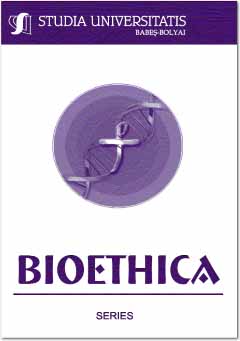MODELE EXPERIMENTALE UTILIZATE ÎN STUDIUL FIBROZEI HEPATICE
EXPERIMENTAL MODELS FOR THE STUDY OF LIVER FIBROSIS
Author(s): Simona Clichici, Maria Aluaș, Cezar Login, Adriana MureșanSubject(s): Anthropology
Published by: Studia Universitatis Babes-Bolyai
Keywords: toxic hepatitis; experimental model; carbon tetrachloride; thioacetamide.
Summary/Abstract: Liver fibrosis represents a possible reversible lesion observed in a large number of chronic hepatic injuries. Frequently, liver fibrosis quantification is performed using invasive maneuvers. Identification of non-invasive fibrosis markers, which might allow a quick and specific diagnosis for the fibrosis onset and, equally, which might allow monitoring fibrosis progression is very important. Research can be performed on experimental models, using rats or mice. In order to induce fibrosis, invasive techniques can be used (e.g. biliary ducts ligation), as well as, frequently, toxic experimental models. The experimental model to be used should be chose by taking into account how invasive the method is, how many animal will be used, the toxicology of the used substance, how reproducible the model is, and the extent to which the results of the experiment can be used in clinical research. The article will present the most frequently chronic experimental hepatitis models used, the ethical challenges and the legal issues concerning the use of animals for research in Romania.
Journal: Studia Universitatis Babes-Bolyai - Bioethica
- Issue Year: 59/2014
- Issue No: 1-2
- Page Range: 61-70
- Page Count: 10

